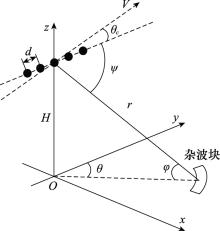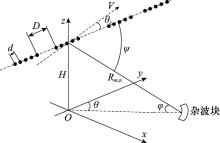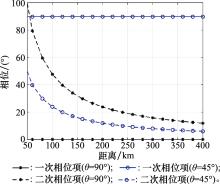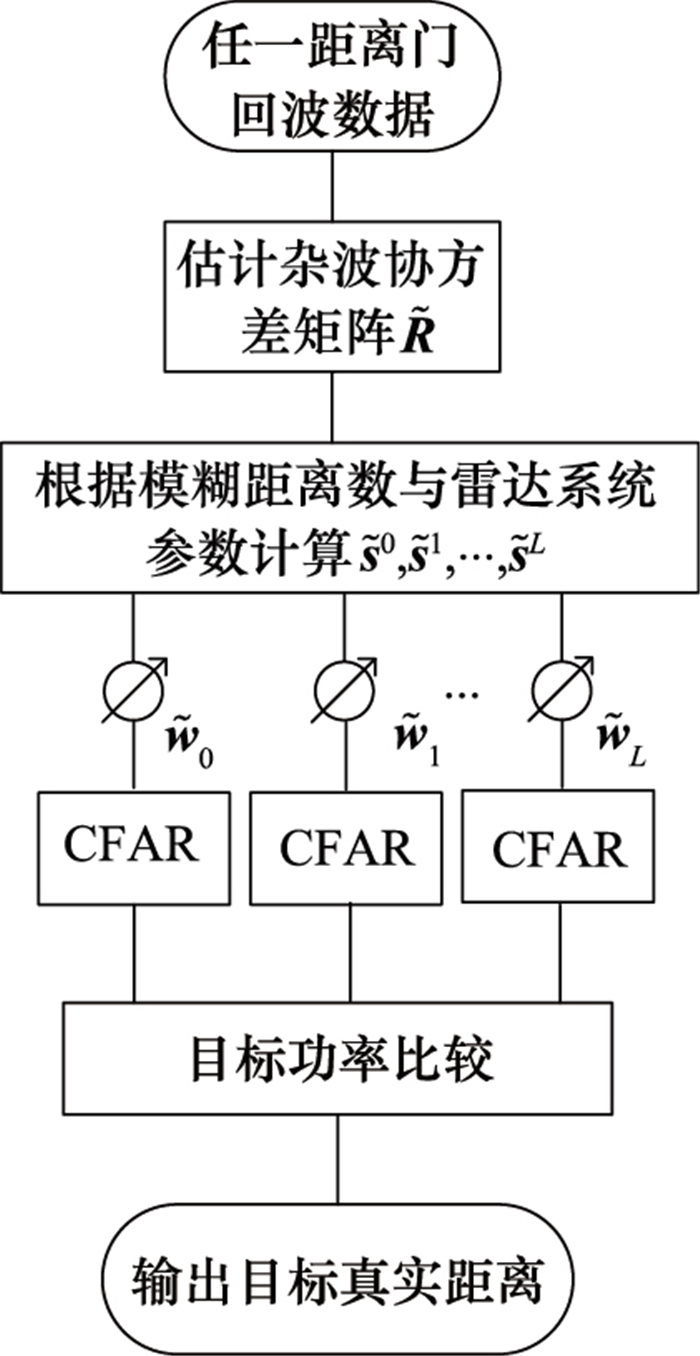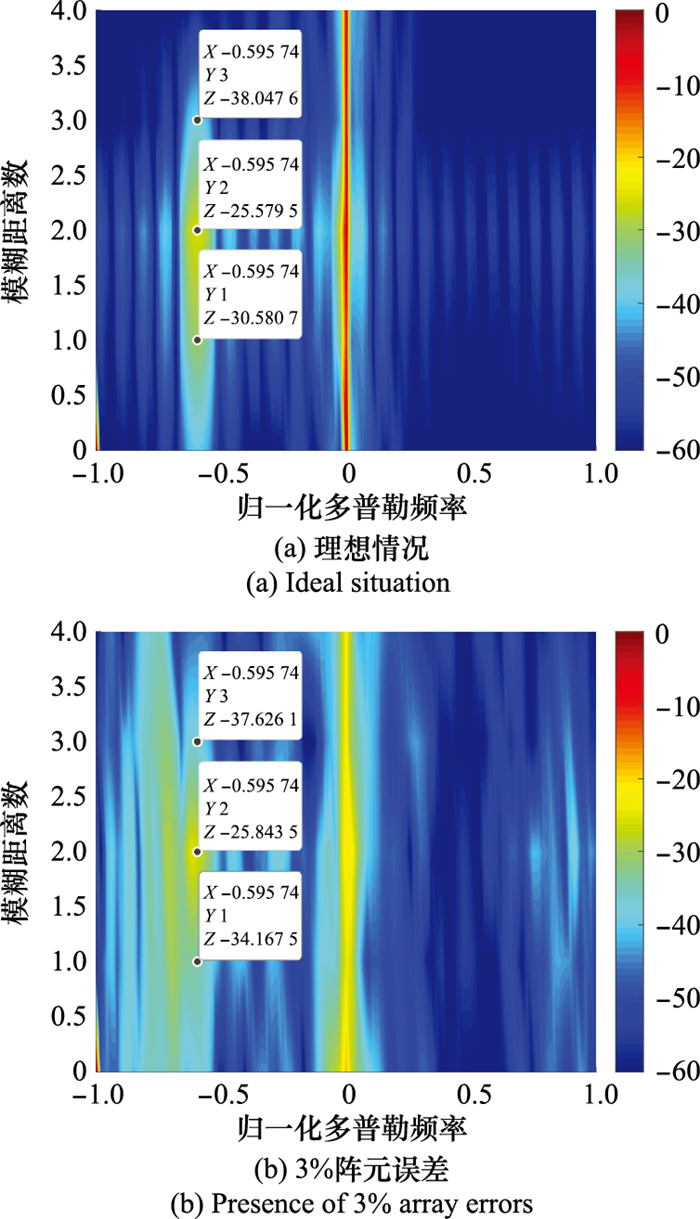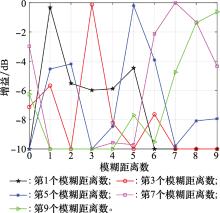Systems Engineering and Electronics ›› 2022, Vol. 44 ›› Issue (2): 480-489.doi: 10.12305/j.issn.1001-506X.2022.02.16
• Sensors and Signal Processing • Previous Articles Next Articles
Resolving range ambiguity for cooperative detection using UAV swarms
Xingjia YANG1, Keqing DUAN1,*, Xiang LI1, Wei QI2
- 1. School of Electronics and Communication Engineering, Sun Yat-sen University, Shenzhen 518107, China
2. Air Force Early Warning Academy, Wuhan 430019, China
-
Received:2021-01-15Online:2022-02-18Published:2022-02-24 -
Contact:Keqing DUAN
CLC Number:
Cite this article
Xingjia YANG, Keqing DUAN, Xiang LI, Wei QI. Resolving range ambiguity for cooperative detection using UAV swarms[J]. Systems Engineering and Electronics, 2022, 44(2): 480-489.
share this article
| 1 | 侯进永, 刘传文. 无人机集群协同作战发展现状及关键技术分析[J]. 现代雷达, 2020, 42 (6): 30- 40. |
| HOU J Y , LIU C W . Development situation and key technology analysis of cooperative combat for unmanned aerial vehicle swarm[J]. Modern Radar, 2020, 42 (6): 30- 40. | |
| 2 | 贾高伟, 王建峰. 无人机集群任务规划方法研究综述[J]. 系统工程与电子技术, 2021, 43 (1): 99- 111. |
| JIA G W , WANG J F . Research review of UAV swarm mission planning method[J]. Systems Engineering and Electronics, 2021, 43 (1): 99- 111. | |
| 3 | 党爱国, 王坤, 王延密, 等. 无人机集群作战概念发展对未来战场攻防影响[J]. 战术导弹技术, 2019, (1): 37- 41. |
| DANG A G , WANG K , WANG Y M , et al. The impact of UAVs swarming fighting concept development on attack and defense in future battle field[J]. Tactical Missile Technology, 2019, (1): 37- 41. | |
| 4 |
ZHOU Y K , RAO B , WANG W . UAV swarm intelligence: recent advances and future trends[J]. IEEE Access, 2020, 8, 183856- 183878.
doi: 10.1109/ACCESS.2020.3028865 |
| 5 |
KATO N , FADLULLAH Z M , TANG F X , et al. Optimizing space-air-ground integrated networks by artificial intelligence[J]. IEEE Wireless Communications, 2019, 26 (4): 140- 147.
doi: 10.1109/MWC.2018.1800365 |
| 6 |
HONG L , GUO H Z , LIU J J , et al. Toward swarm coordination: topology-aware inter-UAV routing optimization[J]. IEEE Trans.on Vehicular Technology, 2020, 69 (9): 10177- 10187.
doi: 10.1109/TVT.2020.3003356 |
| 7 |
YANG D C , WU Q Q , ZENG Y , et al. Energy trade-off in ground-to-UAV communication via trajectory design[J]. IEEE Trans.on Vehicular Technology, 2018, 67 (7): 6721- 6726.
doi: 10.1109/TVT.2018.2816244 |
| 8 |
CHEN X , FENG Z Y , WEI Z Q , et al. Performance of joint sensing-communication cooperative sensing UAV network[J]. IEEE Trans.on Vehicular Technology, 2020, 69 (12): 15545- 15556.
doi: 10.1109/TVT.2020.3042466 |
| 9 | ANDERSON B, ELLINGSON J, EYLER M, et al. Networked radar systems for cooperative tracking of UAVs[C]//Proc. of the IEEE International Conference on Unmanned Aircraft Systems, 2019: 909-915. |
| 10 |
ZHANG X , DUAN L J . Energy-saving deployment algorithms of UAV swarm for sustainable wireless coverage[J]. IEEE Trans.on Vehicular Technology, 2020, 69 (9): 10320- 10335.
doi: 10.1109/TVT.2020.3004855 |
| 11 | BRENNAN L E , REED L S . Theory of adaptive radar[J]. IEEE Trans.on Aerospace and Electronic Systems, 2007, 9 (2): 237- 252. |
| 12 | STINSON G W. 机载雷达导论[M]. 吴汉平译. 北京: 电子工业出版社, 2005. |
| STINSON G W. Overview of airborne radar[M]. WU H P trans. Beijing: Publishing House of Electronics Industry, 2005. | |
| 13 | HOVANESSIAN S A . An algorithm for calculation of range in a multiple PRF radar[J]. IEEE Trans.on Aerospace and Electronic Systems, 1976, 12 (2): 287- 290. |
| 14 |
GERLACH K , ANDREWS G A . Cascaded detector for multiple high-PRF pulse Doppler radars[J]. IEEE Trans.on Aerospace and Electronic Systems, 1990, 26 (5): 754- 767.
doi: 10.1109/7.102711 |
| 15 | TRUNK G, BROCKETT S. Range and velocity ambiguity resolution[C]//Proc. of the IEEE National Radar Conference, 1993: 146-149. |
| 16 | 曹成虎, 赵永波, 庞晓娇, 等. 基于中国余数定理的目标距离估计算法[J]. 系统工程与电子技术, 2019, 41 (12): 2717- 2722. |
| CAO C H , ZHAO Y B , PANG X J , et al. Method based on Chinese remainder theorem for range estimation of the target[J]. Systems Engineering and Electronics, 2019, 41 (12): 2717- 2722. | |
| 17 |
LEVANON N . Mitigating range ambiguity in high PRF radar using inter-pulse binary coding[J]. IEEE Trans.on Aerospace and Electronic Systems, 2009, 45 (2): 687- 697.
doi: 10.1109/TAES.2009.5089550 |
| 18 | 许京伟, 廖桂生. 前视阵FDA-STAP雷达距离模糊杂波抑制方法[J]. 雷达学报, 2015, 4 (4): 386- 392. |
| XU J W , LIAO G S . Range-ambiguous clutter suppression for forward-looking frequency diverse array space-time adaptive processing radar[J]. Journal of Radars, 2015, 4 (4): 386- 392. | |
| 19 |
王成浩, 廖桂生, 许京伟. FDA-SAR高分辨宽测绘带成像距离解模糊方法[J]. 电子学报, 2017, 45 (9): 2085- 2091.
doi: 10.3969/j.issn.0372-2112.2017.09.005 |
|
WANG C H , LIAO G S , XU J W . Range-ambiguity resolving method for high-resolution and wide-swath imaging with FDA-SAR[J]. Acta Electronica Sinica, 2017, 45 (9): 2085- 2091.
doi: 10.3969/j.issn.0372-2112.2017.09.005 |
|
| 20 |
XU J W , ZHANG Y B , LIAO G S , et al. Resolving range ambiguity via multiple-input multiple-output radar with element-pulse coding[J]. IEEE Trans.on Signal Processing, 2020, 68, 2770- 2783.
doi: 10.1109/TSP.2020.2988371 |
| 21 |
徐义正, 廖桂生, 许京伟, 等. 前视阵FDA-MIMO雷达距离模糊杂波抑制方法[J]. 系统工程与电子技术, 2018, 40 (12): 2662- 2667.
doi: 10.3969/j.issn.1001-506X.2018.12.07 |
|
XU Y Z , LIAO G S , XU J W , et al. Range-ambiguous clutter suppression based on forward-looking FDA-MIMO radar[J]. Systems Engineering and Electronics, 2018, 40 (12): 2662- 2667.
doi: 10.3969/j.issn.1001-506X.2018.12.07 |
|
| 22 |
DURR A , SCHNEELE B , SCHWARZ D , et al. Range-angle couplingand near-field effects of very large arrays in mm-wave imaging radars[J]. IEEE Trans.on Microwave Theory and Techniques, 2021, 69 (1): 262- 270.
doi: 10.1109/TMTT.2020.3022938 |
| 23 | ABHAYAPALA T D. Modal analysis and synthesis of broad band nearfield beamforming arrays[D]. Canberra: Australian National University, 1999. |
| 24 | WARD J. Space-time adaptive processing for airborne radar[R]. Lexington: Lincoln Laboratory, MIT, 1994. |
| 25 |
KLEMM R . Introduction to space-time adaptive processing[J]. Electronics and Communications Engineering Journal, 1999, 11 (1): 5- 12.
doi: 10.1049/ecej:19990102 |
| 26 | WANG H, PARK H R, WICKS M C. Recent results in space-time processing[C]//Proc. of the IEEE National Radar Confe-rence, 1994: 104-109. |
| 27 |
PELL C . Phased-array radars[J]. IEE Review, 1988, 34 (9): 363- 367.
doi: 10.1049/ir:19880149 |
| 28 |
宋嘉奇, 陶海红. 一种稀布阵列天线的近场波束综合算法[J]. 西安电子科技大学学报, 2018, 45 (6): 14- 18.
doi: 10.3969/j.issn.1001-2400.2018.06.003 |
|
SONG J Q , TAO H H . Near-field beam synthesis algorithm for sparse array antennas[J]. Journal of Xidian University, 2018, 45 (6): 14- 18.
doi: 10.3969/j.issn.1001-2400.2018.06.003 |
|
| 29 | KLEMM R. Prospectives in STAP research[C]//Proc. of the IEEE Sensor Array and Multichannel Signal Processing Workshop, 2000: 7-11. |
| 30 | ROBERT C D. Extended factored space-time processing for airborne radar systems[C]//Proc. of the Conference Record of the 26th Asilomar Conference on Signals, Systems & Computers, 1992: 425-430. |
| 31 |
TONG Y L , WANG T , WU J . Improving EFA-STAP performance using persymmetric covariance matrix estimation[J]. IEEE Trans.on Aerospace and Electronic Systems, 2015, 51 (2): 924- 936.
doi: 10.1109/TAES.2015.130264 |
| [1] | Hai LI, Weijie CHENG, Ruijie XIE. Wind speed estimation of low-altitude wind-shear based on homotopy sparse STAP [J]. Systems Engineering and Electronics, 2022, 44(4): 1174-1181. |
| [2] | Xuping GU, Daquan TANG. Hierarchical cooperative navigation of UAV swarm based on federated filtering algorithm [J]. Systems Engineering and Electronics, 2022, 44(3): 967-976. |
| [3] | Xiaowei FU, Jing PAN. Distributed formation control of UAV swarm with dynamic obstacle avoidance [J]. Systems Engineering and Electronics, 2022, 44(2): 529-537. |
| [4] | Xiaozhou CHEN, Qingjun XING, Lidong ZHANG. Slow-time-frequency-modulation jamming method forSTAP airborne early-warning radar [J]. Systems Engineering and Electronics, 2021, 43(11): 3177-3184. |
| [5] | Xiaowei FU, Zihao CHEN. Design of control method for multi-UAV cooperative detection of fast target [J]. Systems Engineering and Electronics, 2021, 43(11): 3295-3304. |
| [6] | Yanhui ZHAO, Jianlong TANG, Jiyang LI, Luhao BI. Analysis of time-delay aliasing transmission jamming method for reduced dimension STAP airborne radar [J]. Systems Engineering and Electronics, 2020, 42(8): 1718-1725. |
| [7] | Yang ZHANG, Guangya SI, Yanzheng WANG. Simulation of unmanned aerial vehicle swarm electromagnetic operation concept [J]. Systems Engineering and Electronics, 2020, 42(7): 1510-1518. |
| [8] | Mingming TIAN, Guisheng LIAO, Yunpeng LI, Shengqi ZHU. Clutter properties and suppression method of hypersonic platform radar [J]. Systems Engineering and Electronics, 2020, 42(2): 301-308. |
| [9] | ZHANG Yang, SI Guangya, WANG Yanzheng. Modeling of cooperative target allocation of the UAV swarm cyberspace attack action [J]. Systems Engineering and Electronics, 2019, 41(9): 2025-2033. |
| [10] | PANG Xiaojiao, ZHAO Yongbo, CAO Chenghu, XU Baoqing, CHEN Sheng. Space-time processing method with temporal adaptive FIR filters [J]. Systems Engineering and Electronics, 2019, 41(12): 2669-2674. |
| [11] |
GAO Yang, LI Dongsheng.
Swarm situation perception consensus evaluation via intervalnumber Heronian operators with variable weights
[J]. Systems Engineering and Electronics, 2019, 41(1): 89-95.
|
| [12] | LI Zhihui, ZHANG Yongshun, GAO Qian, GUO Yiduo, WANG Qiang, LIU Yang. Off-grid STAP algorithm based on local search orthogonal matching pursuit [J]. Systems Engineering and Electronics, 2018, 40(6): 1221-1226. |
| [13] | FENG Yang, LIAO Guisheng, XU Jingwei. Robust STAP method for supper-low-attitude target detection with airborne radar [J]. Systems Engineering and Electronics, 2017, 39(7): 1464-1470. |
| [14] | XU Xue-fei, LIAO Gui-sheng, XU Jing-wei. Data domain compensation for STAP with maneuvering platform [J]. Systems Engineering and Electronics, 2016, 38(6): 1221-1227. |
| [15] | GAO Zhi-qi, TAO Hai-hong, ZHAO Ji-chao. Robust spacetime adaptive processing based on S transform for airborne radar [J]. Systems Engineering and Electronics, 2016, 38(6): 1268-1275. |
| Viewed | ||||||
|
Full text |
|
|||||
|
Abstract |
|
|||||
